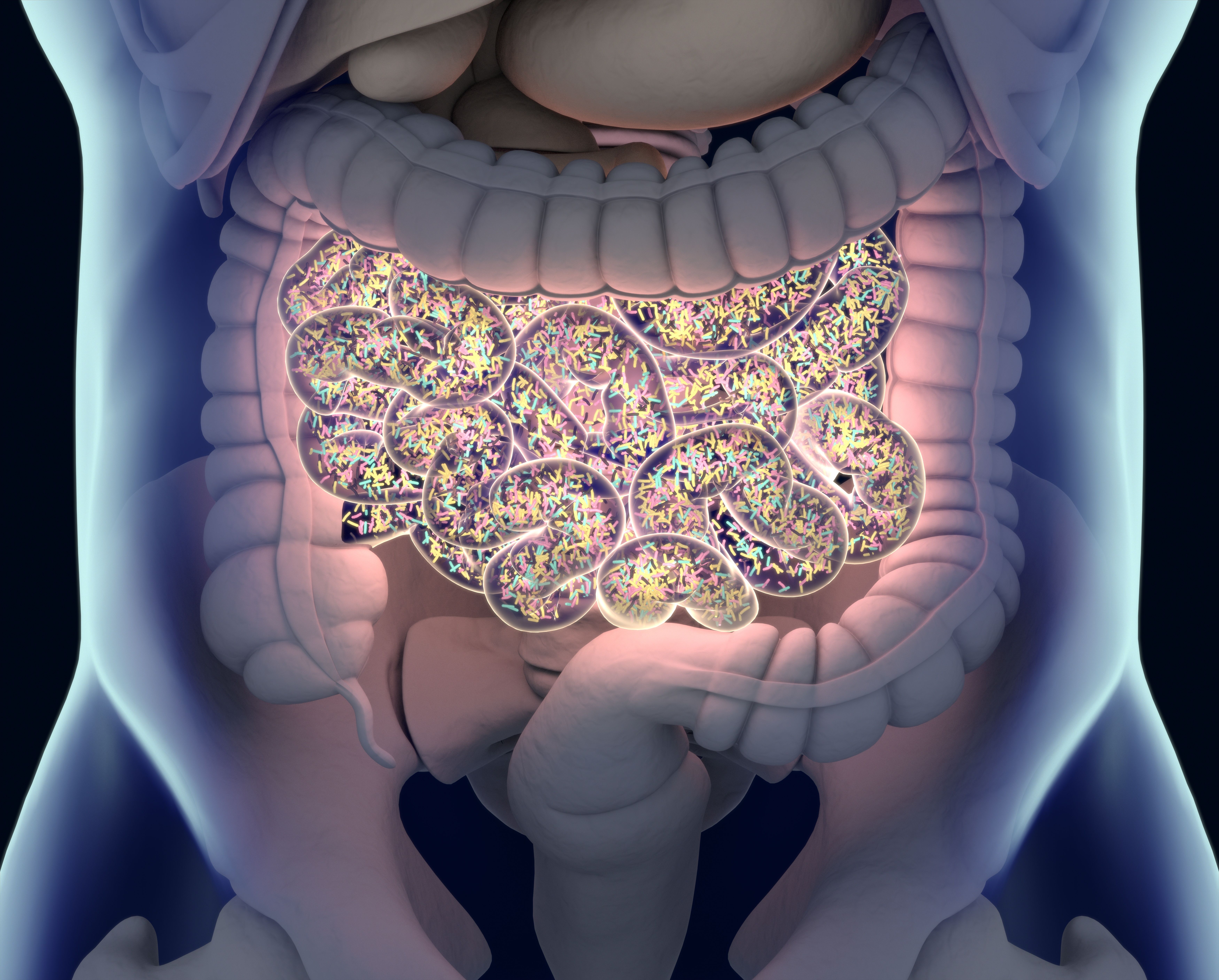Publication
Article
Fun Fact: Understanding Microbes
Question
Is the gut microbiome the only microbiome?
Image credit: Anatomy Insider - stock.adobe.com

Answer
No. There have been enormous strides toward understanding the role of microbes—including bacteria, fungi, protozoa, and viruses—for health, particularly microbes in the gut (gut microbiome).1 But the largest organ, the skin, has an incredibly active microbiome that can also be linked to health. A growing body of research is unveiling the link between skin microbes and immunity, skin disorders, wound healing, and even certain types of cancer.2
The skin microbiome is made up of many different communities of microbes with varying roles that are shaped by the skin microenvironment. There are 3 skin microenvironments, characterized by the skin’s physiology: sebaceous (oily), moist, or dry.2,3
The skin microbiome essentially exists to protect humans from pathogens. Skin microbes coevolved with the body to protect it and limit inflammation.2
Investigators at the University of California, San Diego conducted a study of Staphylococcus epidermidis, a commensal type of Staphylococcus bacteria with natural antibiotic properties. They discovered that S epidermidis releases molecules that prevent cytokine release in skin cells.2
By preventing the cytokines from enabling an inflammatory response, this bacterium allows the skin to have the capacity to heal its wounds. Approximately 20% of the population also has a strain of S epidermidis that protects against melanomas and skin cancer, seen in later research conducted by investigators.2
Healthy adults are meant to have a stable and pathogen-resistant skin microbiota despite many internal and external stressors. Many skin conditions are caused by dysbiosis, a structural or functional disturbance of a normal microbiome that often results in good and bad skin microbes becoming imbalanced.4
Acne (acne vulgaris) may be one of the most common, and visible, skin conditions.2,4 Acne is the byproduct of pathogenic Cutibacterium acnes bacteria.2 It is worth noting that C acnes is inherently beneficial to the skin because it acidifies it to create an unfavorable environment for pathogens. Other factors are likely to contribute to acne, such as level of sebum secretion or genetics.4
Microbiome diversity is associated with increased skin protection and health, but stressors such as aging tend to decrease diversity. Sex is another factor that influences microbe health, as men and women have different hormones, perspiration rates, and skin surface pH.4
External factors that can impact the skin microbiome include environment and antibiotics. For instance, living in an urban environment can have a more negative impact on skin microbiome than living in a rural community because those in rural settings are exposed to more microbiological diversity from the soil, water, and biomass.4
Oral antibiotics destroy pathogenic bacterial strains but destroy healthy bacteria as well, harming the skin ecology and triggering other deleterious effects, such as slower wound healing.2 Antibiotics can catalyze bacterial resistance as well. S aureus—associated with atopic dermatitis (eczema)—is commonly resistant to antibiotics; thus, targeted antibiotic treatment may not just render the antibiotic useless, but it may harm healthy cells, too. This can exacerbate the underlying issue of dysbiosis of the skin microbiome.4
References
- Fast facts about the human microbiome. University of Washington. January 2014. Accessed July 18, 2023. https://depts.washington.edu/ceeh/downloads/FF_Microbiome.pdf
- Bates M. The role of the skin microbiome in health and disease. IEEE. September 9, 2022. Accessed July 18, 2023. https://www.embs.org/pulse/articles/the-role-of-the-skin-microbiome-in-health-and-disease/
- Byrd AL, Belkaid Y, Segre JA. The human skin microbiome. Nat Rev Microbiol. 2018;16(3):143-155. doi:10.1038/nrmicro.2017.157
- Skowron K, Bauza-Kaszewska J, Kraszewska Z, et al. Human skin microbiome: impact of intrinsic and extrinsic factors on skin microbiota. Microorganisms. 2021;9(3):543. doi:10.3390/microorganisms9030543
Newsletter
Stay informed on drug updates, treatment guidelines, and pharmacy practice trends—subscribe to Pharmacy Times for weekly clinical insights.





